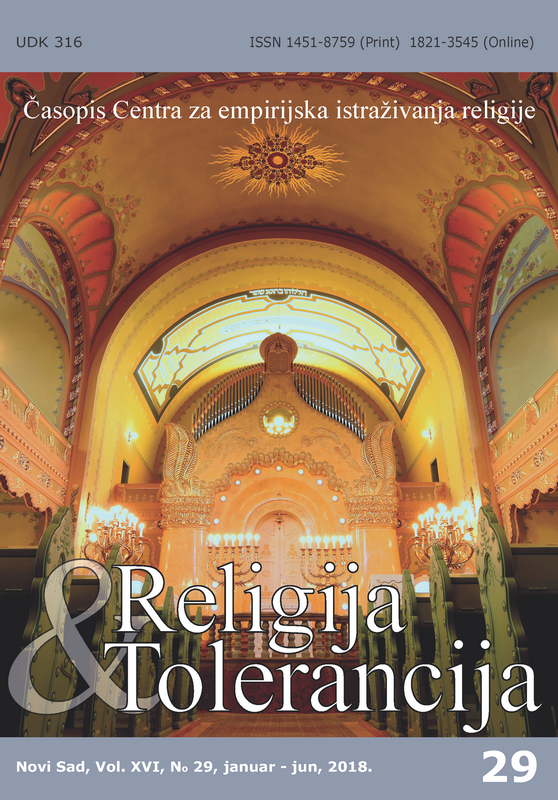ТРАНСФОРМАЦИЈЕ РЕЛИГИЈСКОГ ИДЕНТИТЕTА У САВРЕМЕНОМ ДОБУ
TRANSFORMATION OF RELIGION IDENTITY IN A MODERN AGE
Author(s): Bojana R. VukojevićSubject(s): Social Sciences, Theology and Religion
Published by: Centar za empirijska istraživanja religije (CEIR)
Keywords: identity; secularization; religiousness; religious pluralism; new religious movements;
Summary/Abstract: This paper is reviewing one identity that particularly tracks attention of scientistsfor already two centuries – religious identity. To be precise, the paper will emphasizetransformations which it suffered along with major social changes, which are spoken bysome of the most famous sociologists of religion: Peter Berger, Grace Davie, EileenBarker, Steve Bruce, Zorica Kuburić, Đuro Šušnjić, Ivan Cvitković etc. The processes ofmodernization and rationalization that affected the "cradle of civilization" have been seenin scientific circles for a long time, as processes that will lead to the disappearance ofreligion (secularization theory). The collapse of religion as an obscenity which givesbelievers a fear of an unknown and different, as well as identification and unity with thelike, was announced. After World War II broke most of the illusions about therationalization, humanization and disappearance of religions that would emerge fromtechnological advancement, it has, in most parts of the world, strengthened theidentification with religious communities. Technological development, the take-up ofcapitalism and other anticipated social processes, led to the strengthening of religion (thetheory of desecularization). What theorists at the end of the 20th century could be sure ofis that religious identity has experienced and continues to experience transformations:personal spirituality develops, new religious movements arise, separation of ecclesiasticalreligions as well as the emergence of civic religions arises.This paper will provide anoverview of the most important transformations of religious identity and thus once againindicate that postmodernity
Journal: Religija i tolerancija
- Issue Year: 16/2018
- Issue No: 29
- Page Range: 77-88
- Page Count: 12
- Language: Serbian

